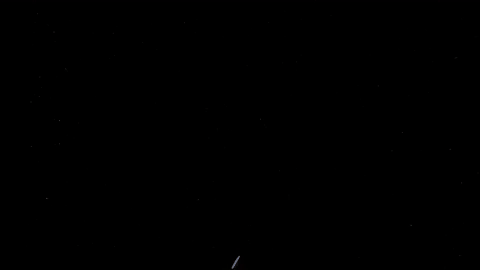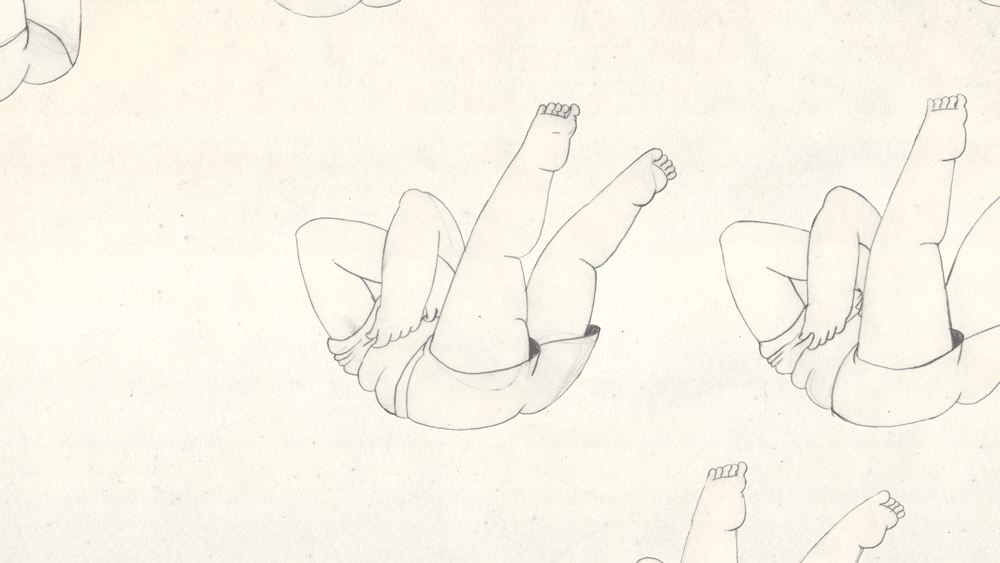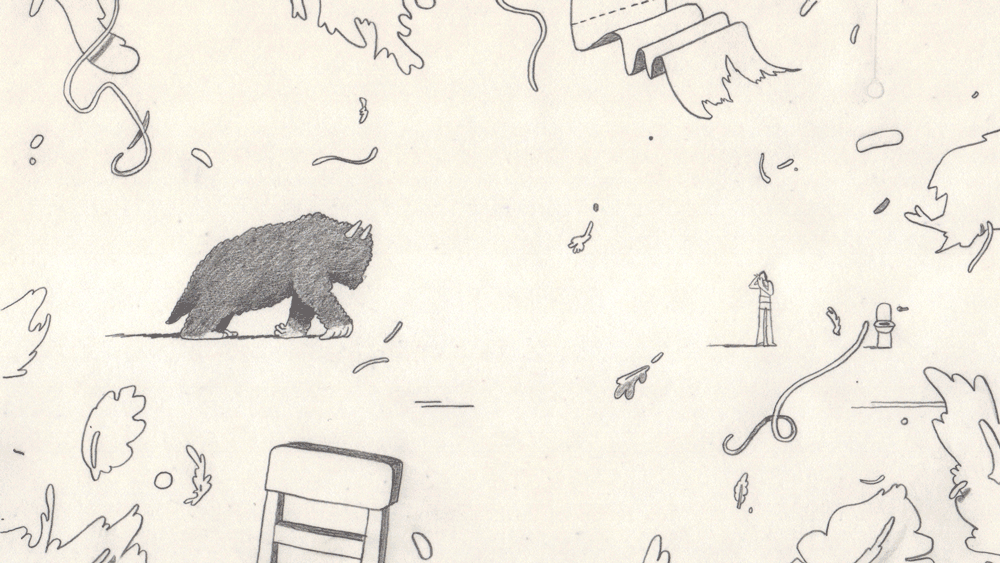Kohana Wilson
An interview with the New York based animator on their award winning film 'edith and the tall child', presented here in an online premiere, plus reflections on community, queer animation and more
Kohana Wilson’s animation work is predominantly hand drawn, and has a distinctive vibrant energy and fluidity. It also possesses a real sensitivity and a heartfelt tenderness, which is ever more valuable and meaningful in a world of spiralling brutality and disenchantment. I think Kohana’s work would speak to me and move me whenever I saw it, but the last five years seem like a time when we truly need it.
I was thrilled to have the opportunity to talk to Kohana about their work and process, as well as their new film-in-progress, teaching, freelancing, queer animation and the animation community. To coincide with this interview, it is an honour to be able to present Kohana’s award winning short film edith and the tall child here in full, as it goes online for the first time.
edith and the tall child (2023) by Kohana Wilson
The film depicts the eponymous tall child ‘falling headfirst into their gender reckoning’, mirroring Kohana’s own experience around the time of making the film. Using the film “as a place to chart my gender undo-ing itself in real-time” as Kohana describes it, gives the work a powerful sense of urgency and necessity. Dynamic and exquisite drawn animation are used to convey a time of disorientation and sudden shifts in emotion. The domestic setting and restricted palette of graphite on paper are perfectly suited to expressing feelings of tension and confinement and their sudden eruption into the everyday.
In addition to edith, Kohana has produced animation for numerous commercial clients including MoMA, Adult Swim, GIPHY and musicians such as Coldplay, Dua Lipa and Florist. Throughout all these commissions their animation shines out with a highly distinctive command of line, movement and detail. They also teach at Parsons School of Design, and in 2021 started the wonderful Boiled Over podcast with Lije Morgan. Kohana is currently working on a new film which I was excited to discuss in the interview, and they have generously shared some wonderful images and storyboards from this work and others which I am very pleased to be able to include here.
Video for Have Heaven by Florist (2025) by Kohana Wilson
EoF: Can you tell us a bit about your background and what brought you to animation?
KW: I was born and raised in Hong Kong to a Japanese mom and an English dad. They’re both orchestra musicians – my mom a violist and my dad a cellist. The orchestra was like a second family and I got to try a bunch of fun instruments growing up. My ultimate musical dream was to be a clarinetist, but that was shot down when I was told I ‘didn’t have the hands for it’ (what this actually means still remains a mystery). But I had always loved to read and draw and paint, and that’s what stuck!
I knew for most of my life that I wanted to be a visual artist in some way, but I didn’t animate until I got to college. I went to The New School in New York where I studied Illustration and Philosophy in a dual degree program. I took a time-based media foundation year class, where we spent one unit learning how to digitally rotoscope. That was as far as we got with animation, but it was my introduction to the world and more than enough for me to know I wanted to keep going. I felt an immediate calling to it, and it felt very intuitive to arrive at animation through drawing. I mostly worked with digital 2D animation in college with Photoshop and Animate, but by the end of my time there I was working pretty exclusively with drawn paper-pencil animation, and still do! I had always been a draw-er, and the task now is to make the drawings move.

EoF: Your short film edith and the tall child is a wonderful, tender and emotional film that feels highly personal. What was the genesis of the film and how clear in your mind was it at the beginning?
KW: I started working on what would become my graduation project, edith and the tall child, in the summer of 2020. I hadn’t animated on paper at all or made a true complete film before, but had been eager to do both for a long time. I was coming to grips with my gender identity at the time, and had just come out publicly as nonbinary / genderqueer. It felt right to use this long stretch of time devoted to one project to make something about this gender reckoning, and to try making a film. Conveniently, I couldn’t leave my apartment for months at a time, so I dedicated all my time to figuring out this new analog workflow and animating very obsessively. The film became my whole world.
In edith, the tall child falls headfirst into their gender reckoning, while Edith – an illusory prehistoric, long-extinct ground sloth – casts a long shadow of heterosexuality, tradition, and memory over their shared living space. The initial inspiration for Edith came from comparisons I had been drawing with extinct animals and the act of coming out and of declaring this type of change in my life. Edith behaves in my own life like a shadow, and as a reminder that I think many queer people relate to having lived a past life or previous existences that they might now feel estranged from.
I had no clear sense of story when I began working on edith. My ‘knowns’ for the film were that I wanted to create something handdrawn on paper, that I wanted to treat it like a diary, and that it would mostly revolve around two characters and their charged relationship. The process began with a lot of writing – lots of scribbling, stream-of-consciousness journaling, generating what I called a ‘picture list’ of vignettes that felt striking to me. My ‘script’ was a list of bullet points that summarized what was happening in each scene. I had generated most of the pre-production material on paper, and so it felt natural to continue drawing on paper. Most of the editing decisions happened while I was animating the film, moving different scenes around the timeline, animating new shots intuitively as needed.
The film is peppered with eraser shavings, scanner lines, and the ghosts of erased frames. A lot of this was just a byproduct of not really knowing what I was doing, but going for it in spite of it. So much of what I was trying to accomplish with the film felt like a total mystery to me. I didn’t follow a traditional pre-production process, it was my first time animating on paper, I didn’t know what the right way to clean a scan-bed was – but I improvised a lot and gave myself the benefit of the doubt. I’ve come to really love the film for this reason. So many of those visual hiccups came from drawing and re-drawing and re-drawing the frames, constantly erasing, then scanning, then checking the motion, and then re-drawing again to make the gesture or angle feel closer to some intuitive metric of correctness. Making this film felt like a kind of self-determination. Something about building a world and all of its details from the ground-up felt right. I think it was largely because I was going through this gender reckoning, and re-learning what I wanted my reality to look and feel like. Carving away until some honest shape emerged, which I think is what drawing does at its best.
EoF: The film is all hand drawn, pencil on paper. Could you talk a bit about your decision to work with these materials? What does physical pencil and paper bring that digital drawing does not?





